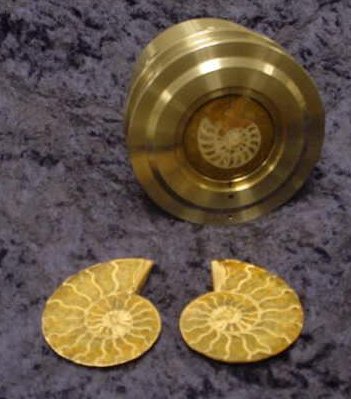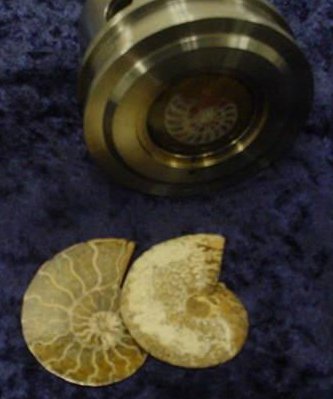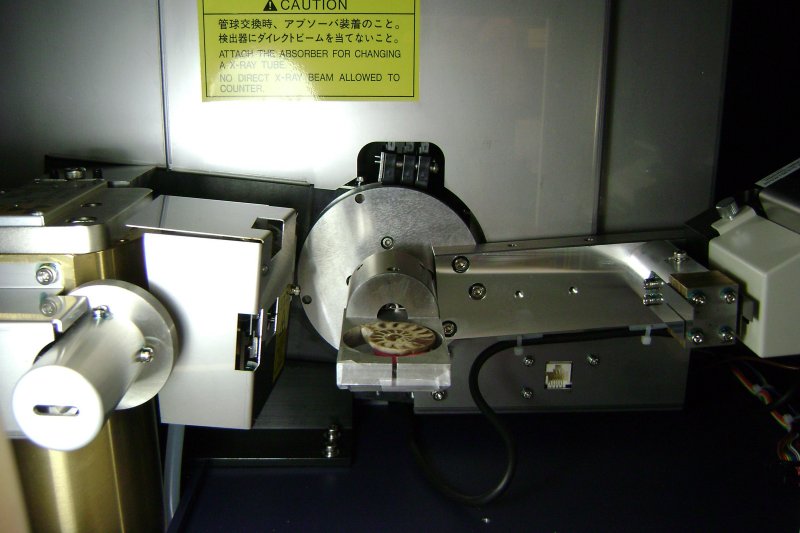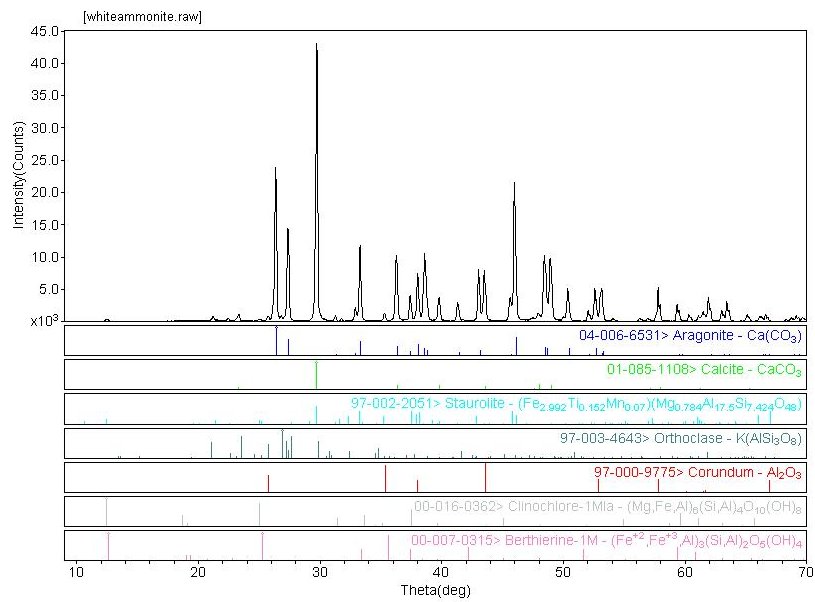Background
Fossils of an extinct nautilus-like marine mollusk are commonly known as ammonites. The name is believed to be derived from their spiral shape, which resemble the Egyptian god Ammon's hat made from a ram's horn. Figure 1 shows the inside cleaved halves (left) and inside and outside surfaces (right) of an ammonite fossil.
Ammonites show a vast diversity of shapes, styles and colors. Classifications are based on structures of the spiral or coiled chambers, called camerae, and exterior features. The different shapes and features seem to be characteristic of different time periods. This is of great importance as the presence of a specific order or suborder in sediments can be used as a biological marker of different geological time periods by paleontologists. Figure 2 shows a white ammonite in a sample holder mounted in the MiniFlex benchtop X-ray diffractometer.



The MiniFlex can be used as a non-destructive method to determine the phase composition of the ammonites and surrounding sediments of ammonite fossils. Figure 3 shows a diffraction pattern from the MiniFlex and the observed phases that were obtained after matching the pattern to the ICDD diffraction database. The fossil can be seen to be a complex mixture of a number of carbonate, oxide, and silicate phases.

